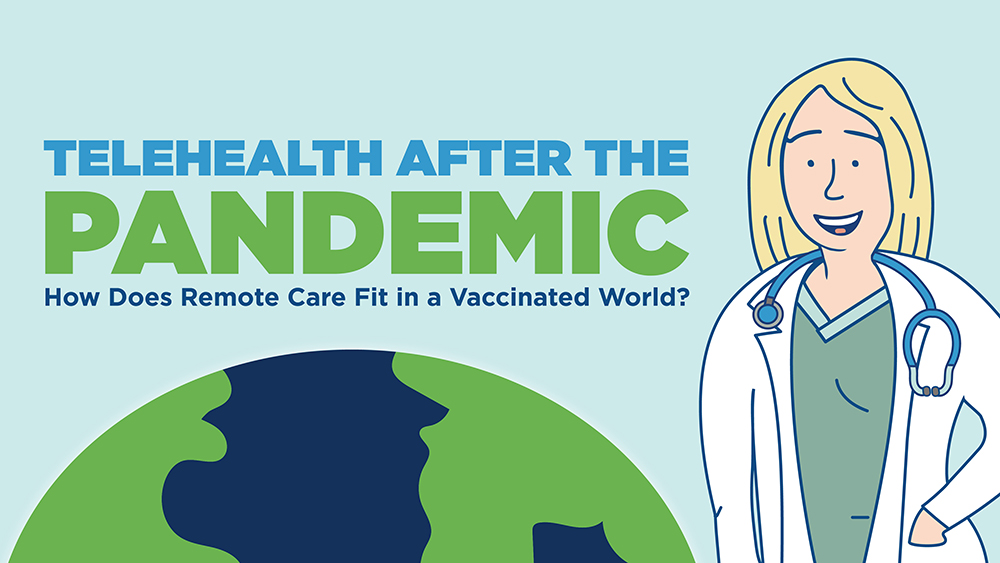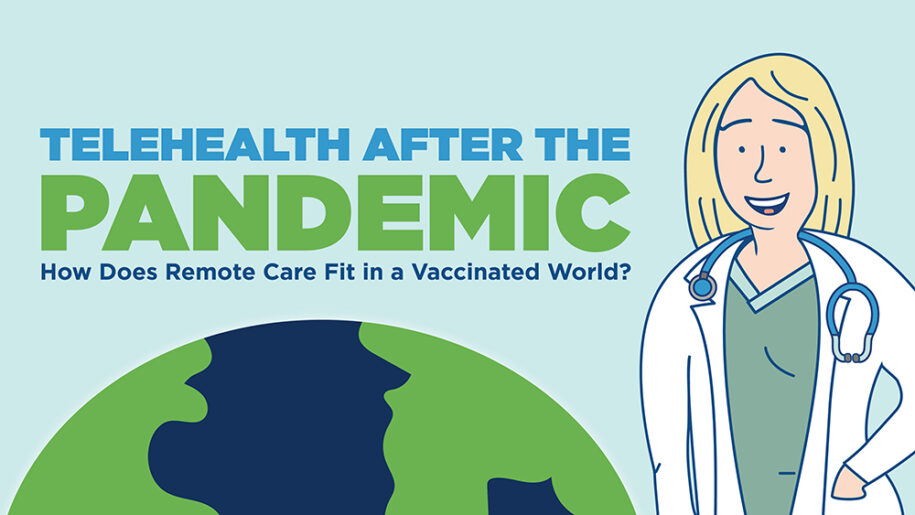
Telehealth After the Pandemic
How does remote care fit in a vaccinated world?
COVID-19 accelerated a nascent migration toward robust telehealth adoption. We all know that.
But as the likelihood strengthens that most of us will get a coronavirus vaccine sometime this year, we’re keeping an eye on what telehealth, and specifically chronic care management, look like in a vaccinated world.
When the pandemic struck, Signallamp Health found itself in a unique position. Our team had the key for providers to keep tabs on chronic disease patient populations through remote nurse case management. To patient groups most vulnerable to COVID-19’s worst outcomes, we cast them a lifeline.
By the second week in March, about 10% of the U.S. population had been fully vaccinated. That same week, President Joe Biden said that he wants to open up access so that everyone can receive it in the months ahead. Until now, select groups like health and front-line workers and those with underlying conditions have had exclusive access, more or less.
Either unfortunately quixotic, or rationally optimistic, Biden suggested that the nation could enjoy a typical Independence Day come July 4.
So if everybody gets vaccinated, that means waiting room capacities loosen up, right? Patients, previously fearful of getting sick, no longer delay regular well visits and routine checkups. But what happens to the enormous shift toward telehealth we all just got used to?
The facts
Disparities existed before COVID-19, and they will exist after it
We only have to look at the greatest public health initiative in recent history, the national vaccine distribution plan, to see how our nation’s health infrastructure picks winners and losers.
“At the very least, the vaccine rollout has shined a light on the vast health care disparities that still remain in our country,” said Signallamp Co-Founder and Chief Executive Officer Drew Kearney. “The healthier, more economically stable will find (the vaccine). Those who are elderly, or may not be comfortable with technology or generally face other socioeconomic barriers … this is no different.”
Remote Chronic Care Management (CCM) leaps over the negative social determinants of health. It moves the exam room into the community. Patients in poor or rural communities, without a strong support network, suddenly have consistent correspondence with a provider, an extension of your practice or health system, on a monthly basis.
Disparities in our health infrastructure reach far beyond social determinants. They’re entrenched in a sick-care delivery system. Physicians and nurses spend more time bringing people back from the brink than helping them stay away from it in the first place.
Chronic disease hasn’t changed
A growing body of research shows that CCM programs keep chronic disease patients on track and within range.
Without regular check-ins between visits, patients slip more easily into medication noncompliance. They downplay symptoms that may signal the onset of an acute episode. Some hide the fact that they need help getting medication or otherwise conceal social determinants of health issues.
Nationwide vaccination status won’t change that.
Chronic disease patients might feel more empowered to keep their regular in-clinic checkups, but case management gaps will remain. Before COVID-19, patients lost sight of their goals between visits, and they will undoubtedly do the same when it subsides.
Functionally, telehealth uses technology to conduct routine monitoring and consultation from a distance. And the nation was already moving, albeit slowly, toward widespread adoption.
“But more broadly it’s about helping patients where they are,” Kearney said. “That’s very much here to stay, but we have a long way to go before it’s adequate.”
Which brings us to our final point.
Infrastructure remains inadequate
As powerful as they may be, telehealth and CCM cannot happen in a vacuum.
“If you’re chronically ill, healthcare for you still has to be local,” Kearney said, describing all the touch points like labs, therapy and in-person visits that are essential to managing chronic disease.
The infrastructure to link face-to-face care with a remote care model remains woefully inadequate, and providers typically don’t have the capacity to build it out on their own.
“For the populations we’re helping to manage, they are trying to make the best of what their local infrastructure allows them,” Kearney said. “The part that actually connects with them between visits, and deals with patient issues when they’re not in front of them – that’s what we bring.”
Contact us today to learn how Signallamp’s remote nurse case managers stand ready to intervene with your chronic disease patients.
* These fields are required.

